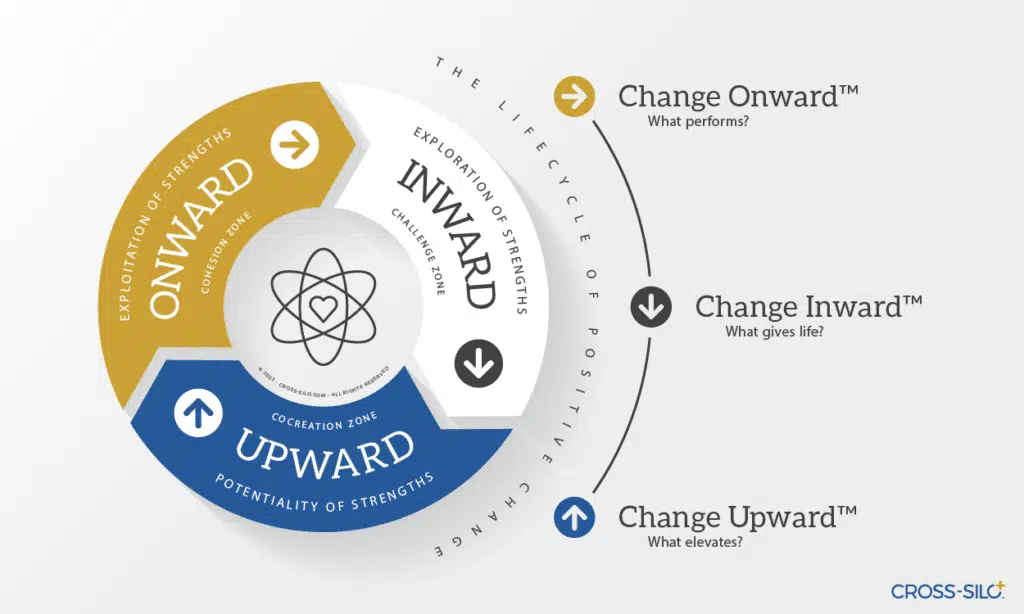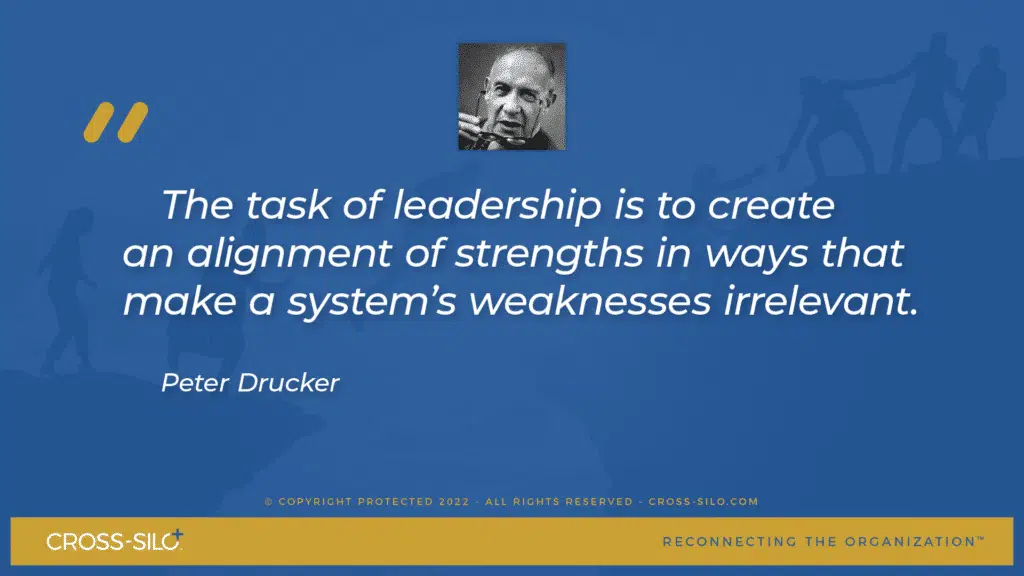In our experience, dealing with large-scale change initiatives, meaningful change can only be achieved by involving the whole system in the process while embracing feedback from all stakeholders as a potential for learning and evolving. To cut the story short, we call our cyclical approach: Change Onward™
Change: 'to make the form, nature, content, future course, etc., of (something) different from what it is or from what it would be if left alone; to transform or convert; a transformation or modification; alteration.'
Onward: 'toward a point ahead or in front; forward, as in space or time; at a position or point in advance; directed or moving onward or forward; forward.'
Change Onward!
We choose to call our approach to OD&C, Change Onward™, for a number of reasons:
- Like time marches onward, Change Onward™ suggests that organizational change is an ongoing process. It never ends because organizations will need to respond to the prevailing circumstances ─ be it changes in conditions, aspirations, or expectations; either enforced or self-emposed.
- Change Onward™ also points to a side-effect of behavior change in which those that have adapted to the change will most likely pass on new behavior to others. However, when left unattended, this change will not last because it isn’t grounded. That is why the whole system needs to be involved.
- Furthermore, Change Onward™ suggests keeping a clear image in our mind of a ‘point ahead’ in time and place ─ what is in front of us but not yet realized. It helps remind us of what we set out to achieve in the first place and continue our advancement in the desired direction.
- You may know the expression Onwards and Upwards, meaning ‘becoming more and more successful’. While upwards points to becoming better, onwards points to going further. We’ve added Inward, because to align our strengths, we first need to know them for within.
- And finally, we believe organizational change has to come from an urge, a trigger or well-understood need for new behavior, new systems, new procedures, new programs, etc. This sense of urgency, combined with other factors, is what drives people to move onward ─ to Rally for Change.
- While Change Onward™ is most effective when the whole system is involved, clients may prefer to start with a pilot. Although this will narrow the breadth of change, it can be offset by depth.
- Given the constraints of most profit-driven business operations, change is often dealt with as a project. Consequently, many change initiatives fail to achieve their goals because transitioning people through a behavior change process often exceeds the time limitations set by a project.
Lifecycle of Positive Change™
In our next blog post, we will explain the sequence of Positive Change, depending on the prevailing circumstances, aspirations, or expectations:
Lifecycle of Positive Change™ = Change Inward™ + Change Upward™ + Change Onward™
Here is a glimpse of what to expect:
Continue reading: The Lifecycle of Positive Change

























